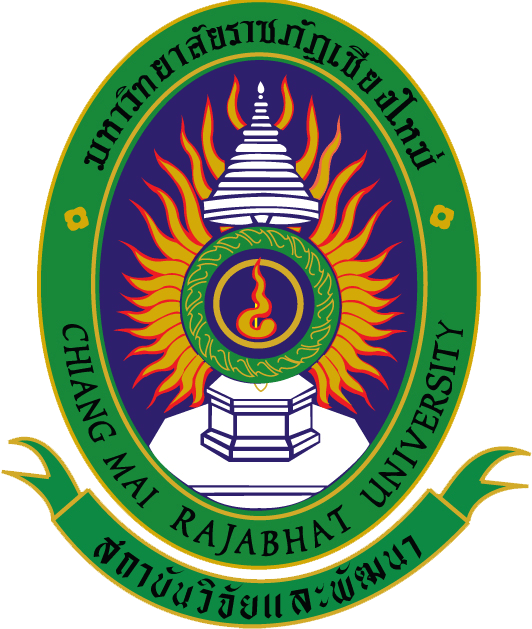
ระบบสารสนเทศงานวิจัย สถาบันวิจัยและพัฒนา มหาวิทยาลัยราชภัฏเชียงใหม่
Research Information System(RIS)
การสร้างสื่อประกอบการสอนแบบผสมผสาน เพื่อพัฒนาทักษะการออกเสียงภาษาอังกฤษของนักเรียนมัธยมศึกษาตอนต้น โรงเรียนอรุโณทัยวิทยาคม จังหวัดเชียงใหม่
อาจารย์ ดร.ณัฎฐ์ฤทัย อรุณศิโรจน์
คณะมนุษยศาสตร์และสังคมศาสตร์
คำสำคัญ :
เลขทะเบียน :
1280-63-HUSO-CMRU
บทคัดย่อ
การวิจัยครั้งนี้มีวัตถุประสงค์ เพื่อ 1) สร้างสื่อประกอบการสอนแบบผสมผสาน เพื่อพัฒนาทักษะการออกเสียงภาษาอังกฤษของนักเรียนชั้นมัธยมศึกษาตอนต้น 2) เพื่อหาประสิทธิภาพของสื่อประกอบการสอนแบบผสมผสาน เพื่อพัฒนาทักษะการออกเสียงภาษาอังกฤษของนักเรียนชั้นมัธยมศึกษาตอนต้น 3) เพื่อเปรียบเทียบผลสัมฤทธิ์ทางการเรียนทางด้านการออกเสียงภาษาอังกฤษของนักเรียนก่อนและหลังการเรียนโดยใช้สื่อประกอบการสอนแบบผสมผสาน และ 4) เพื่อศึกษาความพึงพอใจของนักเรียนที่มีต่อสื่อประกอบการสอนแบบผสมผสาน กลุ่มเป้าหมายได้แก่นักเรียนชั้นมัธยมศึกษาปีที่ 3 โรงเรียนอรุโณทัยวิทยาคม จำนวน 50 คน โดยการสุ่มแบบเจาะจง ส่วนเครื่องมือในการวิจัยประกอบด้วยสื่อประกอบการสอนแบบผสมผสาน ข้อสอบก่อนและหลังเรียนชนิดปากเปล่าซึ่งประกอบไปด้วยรายการชุดคำจำนวน 60 คำและแบบสอบถามประเมินความพึงพอใจการใช้สื่อประกอบการสอนแบบผสมผสานและค่าสถิติในการวิเคราะห์ข้อมูล ได้แก่ค่าเฉลี่ย ส่วนเบี่ยงเบนมาตรฐานและการทดสอบค่าที ผลการวิจัยพบว่าสื่อประกอบการสอนแบบผสมผสานแบ่งออกเป็น 4 รูปแบบ ได้แก่สื่อประกอบการสอนประเภทประสานเวลาแบบเผชิญหน้า (Fact-to-Face Synchronous Instruction) สื่อประกอบการสอนแบบเสมือนจริงแบบประสานเวลา (Synchronous Virtual Instruction) สื่อประกอบการสอนแบบเสมือนจริงแบบไม่ประสานเวลา (Asynchronous Virtual Instruction) และสื่อประกอบการสอนแบบเรียนรู้ด้วยตนเองแบบไม่ประสานเวลา (Self-Paced Asynchronous learning) ในการหาประสิทธิภาพของสื่อประกอบการสอนแบบผสมผสานพบว่าสื่อดังกล่าวมีค่าประสิทธิภาพ (E1/E2) เท่ากับ 80.90/80.93 ซึ่งสูงกว่าเกณฑ์มาตรฐาน 80/80 นอกจากนั้นผลสัมฤทธิ์ทางการเรียนทางด้านทักษะการออกเสียงหลังเรียนโดยใช้สื่อประกอบการสอนแบบผสมผสานของนักเรียนสูงกว่าก่อนเรียนอย่างมีนัยสำคัญทางสถิติที่ระดับ .01 โดยมีคะแนนเฉลี่ยเท่ากับ 48.56 และ 6.90 ตามลำดับและนักเรียนมีความพึงพอใจต่อสื่อประกอบการสอนแบบผสมผสานในระดับมากที่สุด คิดเป็นค่าเฉลี่ยเท่ากับ 4.39
Abstract
This study was aimed 1) to construct the instructional media used in this blended learning to enhance English pronunciation ability of junior secondary school students 2) to assess the efficiency of the instructional media used in this blended learning to enhance English pronunciation ability of junior secondary school students 3) to compare the English pronunciation ability of the students before and after implementing the constructed instructional media in this blended learning, and 4) to investigate the students’ opinions on the implementation of the instructional media in this blended learning. The participants were 50 Matthayom 3 students at Arunothai Wittayakom School by applying the purposive sampling method.The research instruments consisted of the constructed instructional media, an oral pre- and post-test with a word list of 60 words, and a questionnaire. The statistics were mean, standard deviation, and the t-test for dependent sample. The result revealed that the constructed instructional media could be divided into 4 types: the instructional media for face-to-face synchronous instruction, the instructional media for synchronous virtual instruction), the instructional media for asynchronous virtual instruction), and the instructional media for self-paced asynchronous learning. Furthermore, the efficiency of the instructional media used in the blended learning was 80.90/80.93, which was higher than the standard criteria of 80/80. The posttest achievement scores of the students in pronunciation ability were significantly higher than those of the pre-test at a 0.01 level with the mean scores of 48.56 and 6.90 respectively. Furthermore, the overall opinions of the students were at the highest level with the mean scores of 4.39.
ไฟล์งานวิจัย
ข้อมูลการตีพิมพ์
ชื่อบทความ :
แหล่งที่ตีพิมพ์ :วารสารบัณฑิตวิจัย ปีที่ 12 ฉบับที่ 2 (กรกฎาคม – ธันวาคม 2564) Vol.12 No.2 (July - December 2021) หน้า 73 - 88
ปีที่ตีพิมพ์ :2564
99 17 มี.ค. 2563
กองทุนวิจัย มหาวิทยาลัยราชภัฏเชียงใหม่
202 ถ.ช้างเผือก ต.ช้างเผือก อ.เมือง จ.เชียงใหม่ 503000
053-88-5555